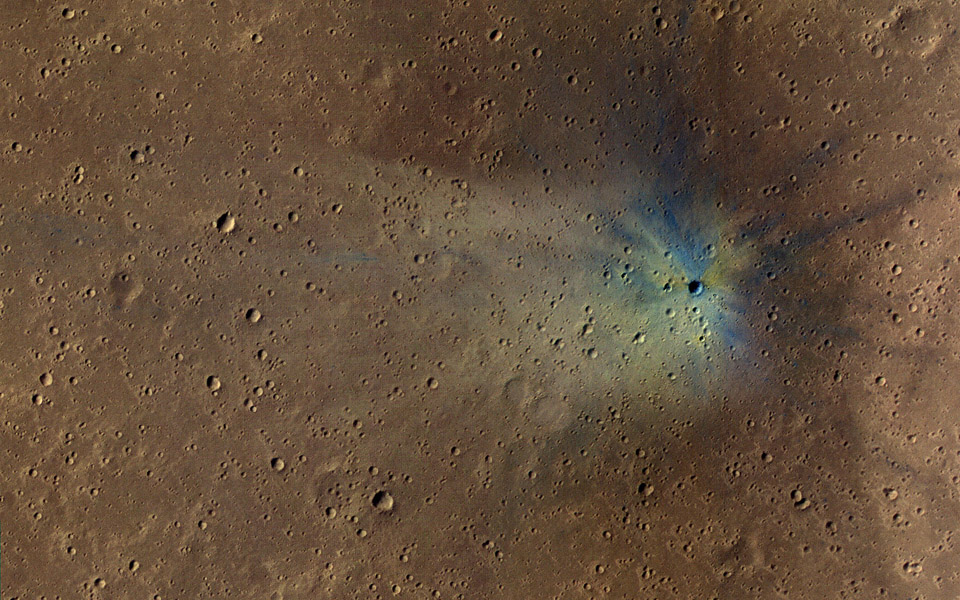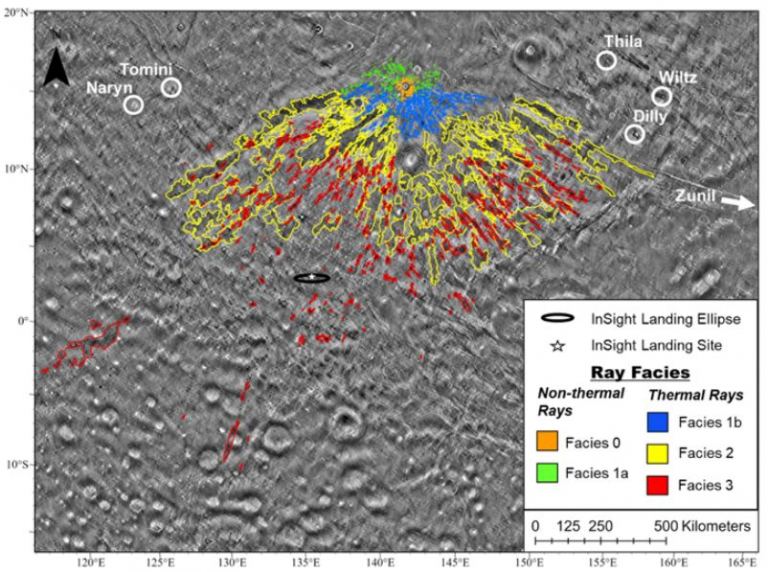Mars, the red planet, has always captured our imagination with its mysteries and exotic landscapes. Scientists recently discovered an extraordinary event that dramatically shaped the surface of Mars: a single massive impact that left a primary crater and more than two billion secondary craters in its wake.
This study, presented at the 55th Annual Lunar and Planetary Science Conference, held in Texas (USA), provides fascinating information about the origins and ramifications of this cosmic event.
Origins and consequences of influence

The massive impact, which occurred about 2.3 million years ago, created the main crater known as Corinth, which is located in Elysium Planitia, a wide plain near the Martian equator. It is estimated that asteroids capable of causing such an impact only strike Mars every 3 million years or so, making Corinth one of the smallest craters by size on the planet. The crater is about 14 kilometers in diameter and 1 kilometer deep, indicating the scale of the event.
In addition to the main crater, the study revealed an extensive “radial system” consisting of impact ejecta. This material spread hundreds of kilometers, creating secondary craters in an unprecedented phenomenon. The impact angle was estimated at between 30 and 45 degrees, and the composition of the impact body was described as “strong and effective basalt.”
Secondary drilling characteristics

The researchers classified the secondary pits into four “facies” based on their shape and distance from the main pit. From facies 0 craters, closer to Corinth and semicircular, to facies 3 craters, long and narrow, the diverse characteristics reflect the complexity of the formation process. The study used data from the Mars Reconnaissance Orbiter (MRO), including images from the High Resolution Imaging Experiment (HiRISE) and Context Camera (CTX), to analyze the properties of ejected craters in detail.
The identification and classification of ejecta craters has provided valuable details about the pattern of distribution and dispersion of material after impact. The presence of secondary craters at a distance of about 2,000 kilometers from the main crater highlights the astonishing scale of this event and its lasting impact on the Martian landscape.
The results of this study shed light on information about geological processes and cosmological influences on Mars, expanding our understanding of the evolution of the Red Planet. While the study provides new information, it also opens new questions and areas of research. What could this unique event reveal about the geological and climatic history of Mars? How can these discoveries benefit future space missions and exploration of the planet? Future work will certainly seek to answer these questions and reveal more secrets about Mars' fascinating history.



![[VÍDEO] Elton John’s final show in the UK has the crowd moving](https://www.lodivalleynews.com/wp-content/uploads/2023/06/Elton-John-1-690x600.jpg)

More Stories
The Director of Ibict receives the Coordinator of CESU-PI – Brazilian Institute for Information in Science and Technology
A doctor who spreads fake news about breast cancer is registered with the CRM of Minas
The program offers scholarships to women in the field of science and technology